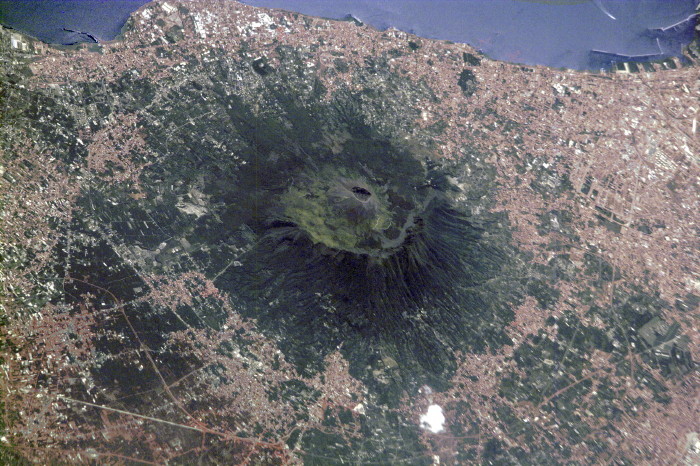Pliny’s Play-by-Play
On August 24, 79, the first recorded explosion of Mount Vesuvius, Italy, was witnessed by the 18-year-old nephew of the Commander of the Roman Fleet. His uncle sailed with ships to rescue survivors, leaving the teen to observe the eruption from home across the Gulf of Naples. He gazed upon a phenomenon on Vesuvius that he described in appearance as a massive tree with a very tall trunk whose highest branches flattened out at the top of the sky.
The uncle, Pliny, perished in his rescue attempt, passing his name onto his nephew. The observant teen was, thereafter, called Pliny the Younger. Twenty-five years later, the younger Pliny described this massive event in two letters so keenly that modern volcanologists often term this type of stratovolcano explosion as a Plinian eruption.
For over 1,900 years most scientists thought Pliny the Younger had exaggerated the never-before-witnessed pyroclastic flows and explosions and column of volcanic ash and rock fragments so large and high that when it reached the boundary between the troposphere and the stratosphere, the top of the cloud flattened. Pliny’s description suddenly came to life within full-televised view of the world on May 18, 1980 with the eruption of Mount St Helens. Volcanology kicked into high gear around the world.

B Bondar / Real World Content Advantage